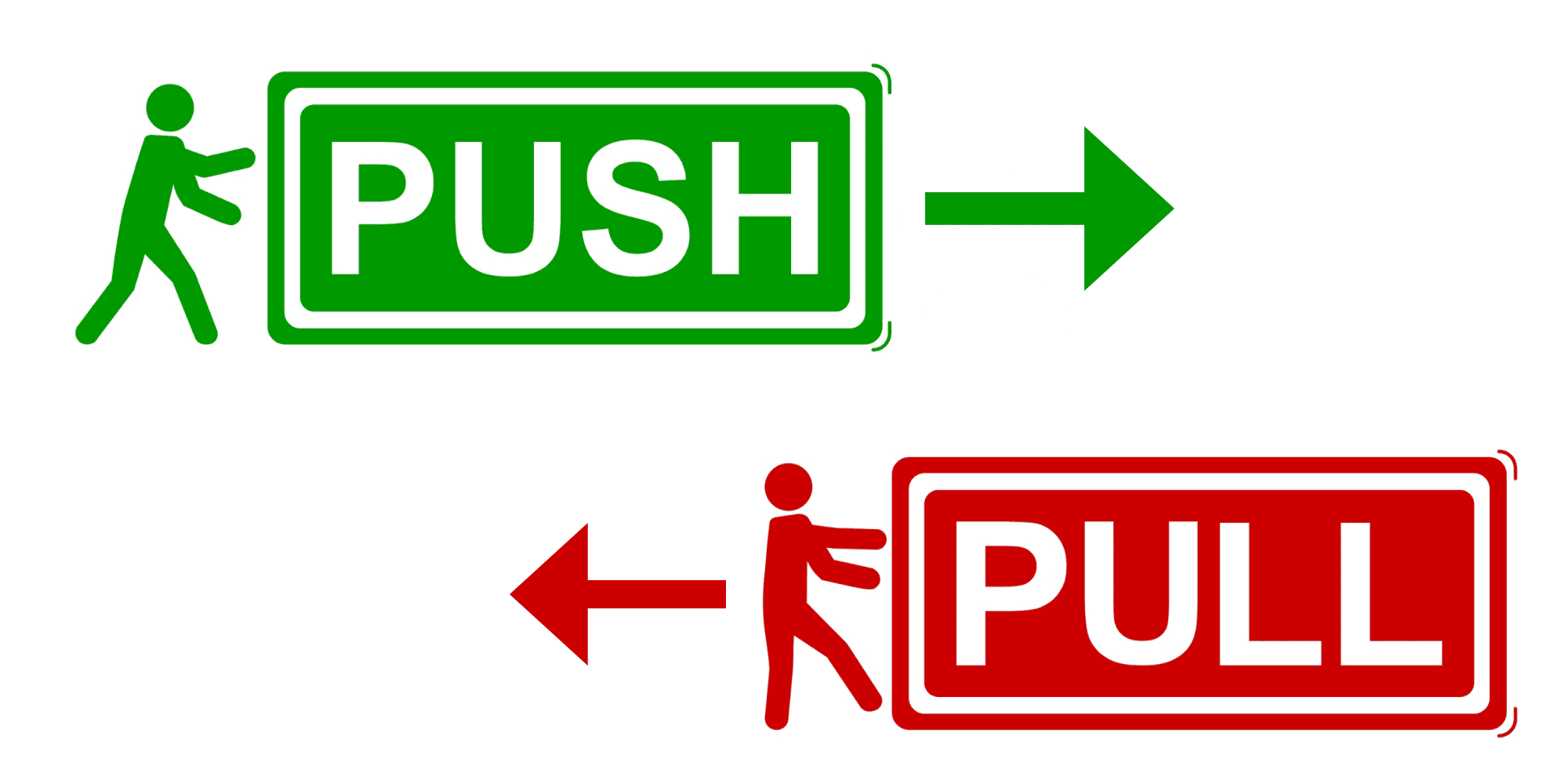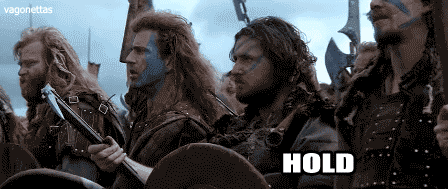
As leaders, sometimes we push ourselves hard. Work hard, be busy, lead by example etc.
We often then push our people to think, decide, do, deliver.
In the #OpenLeadership model, I refer to this as #Warrior mode. It can work for a time yet ultimately depletes others.
Alternatively, we can seek others to feel the pull of our vision and ideas, to be attracted to an idea and bring their own energy, ideas, effort to make that vision a reality.
Life and leadership are not binary, not “either/or”. It is always a matter of balance between push and pull actions and push and pull energies of leadership.
Today some stories and ideas to support you as a leader in considering your own choices around where to find that balance.
PULL

A famous scene from Braveheart, where William Wallace holds back the Scots army until just the right moment at the start of a battle.
Trust, then trust some more.
Recently I facilitated an amazing and unique retreat, one designed to begin a process of creating an entirely new community focussed on a truly new way of looking at leadership and business.
This residential retreat ran over two days, and it was a conscious design to “hold”, to have no set agenda or formal structure for the first day and a half of the two days.
At times I felt the struggle in the energy of staying with the frame of exploring the ideas rather than moving them towards anything structured, yet I stayed with it.
Finally, at what felt like the right moment, I stopped the “hold” energy and shifted to releasing the strong “pull” energy that had been built up, with the group highly attracted to developing a structure and actions to come out of the retreat. Very quickly and powerfully the group came together and co-created powerful anchors, themes and actions to see the idea become an active project.
The power of this “pull” energy continues, as, almost immediately after the retreat, participants felt the pull so strongly that they started jumping in and contributing time and energy to action steps agreed.
No push, all pull.
Trust, then trust some more.
Trust, then trust some more became my key learning from the retreat as the facilitator. In trusting to “hold” then “hold” some more, the “pull” energy generated was truly powerful.
PUSH
“Oh my god, oh my god, the Mercedes has taken off..this is an awful accident, an awful accident..shock and horror and amazement in the Mercedes garage.. they can’t believe.. a dreadful sense of responsibility and concern”
A year ago I wrote “Pushing too far, and learning from it !“, beginning the piece:
“I’m fascinated by elite performance. Sometimes “pushing” can turn toxic, as I discussed with “how far is it acceptable to push?“, talking about the use of performance enhancing drugs in pro cycling and the culture around it. Sometimes, however, we must challenge ourselves to see what our limits are, then learn, both in terms of skills and self-belief, where we can go further. However, sometimes we go TOO far, so let me tell a few stories that make both points.”
The words above the video clip are from the live commentary and speak powerfully to pushing too far.
I wrote to close of that article year ago:
“Now, this is a prototype Mercedes that flipped into the air during a race. A truly freak occurrence that could have killed the driver and even spectators, yet could not have been forecast, yes ? No. it absolutely could have been forecast. This was the first time racing for this version of the car, and Mercedes had not only flipped one in practice, but also on the very day of the race in pre-race warm up. Somehow, they chose to race the cars, and this clip shows the results of their choice to keep racing. Of course they then instantly pulled their remaining cars out of the race, and it was a miracle that nobody died, but did they push too far ? You decide.”
The example of the facilitation of that retreat was all about a conscious design to create PULL energy.
The second story is linked to elite performance in sports and how sometimes it is both necessary and valuable to PUSH oneself and others, as only by doing so do we find our limits. The example from the Dumbreck crash in 1999, though, carries a powerful lesson of the importance of being aware of how far to push so as not to “snap the elastic band”.
IN that clip there is a powerful tiny moment where a mechanic in the garage puts his hands over his face, almost in prayer, then walks away out of shot. That was nearly twenty years ago. Imagine if Alan Dumbreck had died (he was unhurt, miraculously). Imagine the burden of responsibility that mechanic and all the others would still be carrying.
To close, perhaps you are a business leader. I hope you are not in the line of business where there is risk of life and death by pushing too far. However, there is a growing awareness of the pressure on mental health from people pushing themselves too far and being pushed too far.
Please, be aware of how far to push, and also the power of instead choosing to create a space where people choose to be pulled towards you, your ideas, your vision.
